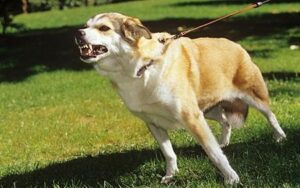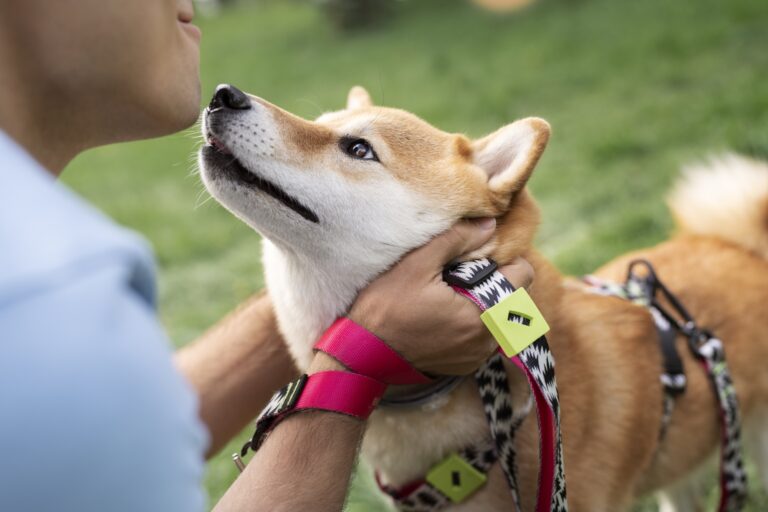How Do I Read My Dog’s Body Language?
On a daily basis at our dog training facility in Northern Virginia, we are talking to people about reading their dog’s body language to better help predict their dog’s behavior and make them understand their dog better.
There is a big misconception with people that a wagging tail means a happy dog, that can be true in some cases; however, in some cases this misinterpretation can result in someone getting bit by a dog. This is why it’s important to understand your dog’s body language, a dog can give you all of the warning signs possible, and you misreading them could result in a disaster that was easily preventable.
To illustrate this point, tail wagging can mean: happiness, fear, insecurity, or even issuing a challenge/warning. So, you can see why “if a dog is wagging his tail he is happy,” is simply not true all of the time.
To break this down, there are many factors of the tail that one can look at. For example, a tail at middle-height generally means the dog is relaxed (the look you will see casually hanging out around the house), a tail out and horizontal means the dog is aware and alert (you may see this at night, when the dog hears a noise, or sees an animal in the distance), if the tail is raised up high that can be a dominant signal, and if the tail is very low or tucked, this is generally a submissive or fear based signal.
Now that you have dissected the the actual positioning of the tail, now you can even look at the pace or speed of the tail wag its’ self. A tail with a very wide range of movement (almost a 180) is your stereotypical “I’m very excited and happy” wag, a tail that is wagging without as much range of motion is kind of like your “hello” wag, a slow wagging tail with the tail at a horizontal height is an indifferent or even an insecure wag, and a tail that is vertical while making small fast motions is generally a threatening wag (like a Rattle Snake’s tail before striking).
Look at some these wags much like smiles on a human being:
Dog: When excited they have a huge 180 wag
Human: When excited to see someone you haven’t seen for awhile, you have a huge smile
Dog: When they have a wag with a smaller range of motion it’s more of a “hello.”
Human: When you meet a stranger, you give a quick smile, not the same HUGE smile you give to someone you miss or know.
Dog: When fearful or submissive, the tail is tucked low.
Human: When sad, you frown and your lip curls downward.
Dog: When threatening, the tail makes very small vibration-like movements.
Human: When aggravated or annoyed, people say, “I’m so mad I was shaking!” Hands trembling (small vibration-like movements).
Finally, you must look at which direction the tail is wagging, to the left or to the right? Recently, a neuroscientist Giorgio Vallortigara and two veterinarians Marcello Siniscalchi and Angela Quaranta did a study on what the direction of dog’s tail wags meant. What they found was that the direction the dogs wag their tails can definitely tell you a lot about their current emotion.
What they found is that when a dog wags their tail to THEIR left (your right if you are facing the dog) that means the dog has a negative or avoidance emotion, which means that you should probably avoid making immediate contact with the dog. When a dog wags their tail to THEIR right (your left if you are facing the dog), that means that the dog associates what it is seeing with something positive and happy.
So, an easy way to remember it, if you are FACING a dog (you all are making eye contact, essentially), remember:
Right is WRONG (do not approach)
Left is RIGHT (friendly and happy)
Being able to read these tail wags alone can prevent you from getting bit by a dog that you were thinking about approaching, or it can prevent your dog from biting or snapping at someone that you gave the go-ahead to approach your dog. Simple reasons like this are why it’s imperative to begin learning how to read your dog’s body language.
If your dog has aggression issues, always seek out a qualified dog trainer in your area who assist you with reading your dog’s body language and being fixing their issues.
Also, you can see if the hair on your dog’s back (also referred to “hackles”) is standing up, this is a sign that they can be overly excited, insecure, aggressive, or nervous. So, anytime you see this in your dog, you should immediately look around and analyze the situation to see what’s going on around your dog in order to see what has triggered this response. Much like the tail wagging, this may be another sign your dog is giving you that he/she is not comfortable in the situation you have put him/her in and you can intervene removing them from the situation before it possibly escalates to something more.
Additionally, you can see your dog’s ear positioning! Ears standing up and forward usually means the dog is alert, attentive, and possibly excited. Ears that are generally flattened against the dog’s head indicate that the dog is afraid and/or threatened, ears that are facing backward but not flat against the head is generally telling you that the dog is unhappy or in an uncomfortable situation.
You can also tell a lot about your dog’s bark, this is why it’s important to know YOUR dog. My dog growls a lot when he is playing, and his play grow sounds different than his aggressive growl. Many people have heard his play grown when they were at the house and they got scared thinking he was going to bite them, when really he was trying to engage them in play. So, this is a situation where it’s important to know your dog’s growl, you can tell people “he just wants to play” or you can tell people, “Leave him alone.”
If you really become in-tune with your dog’s body language and start noticing ALL of these signs combined, you can generally put together an “emotion-based profile” of your dog and you will know exactly how your dog feels in any and every situation.




